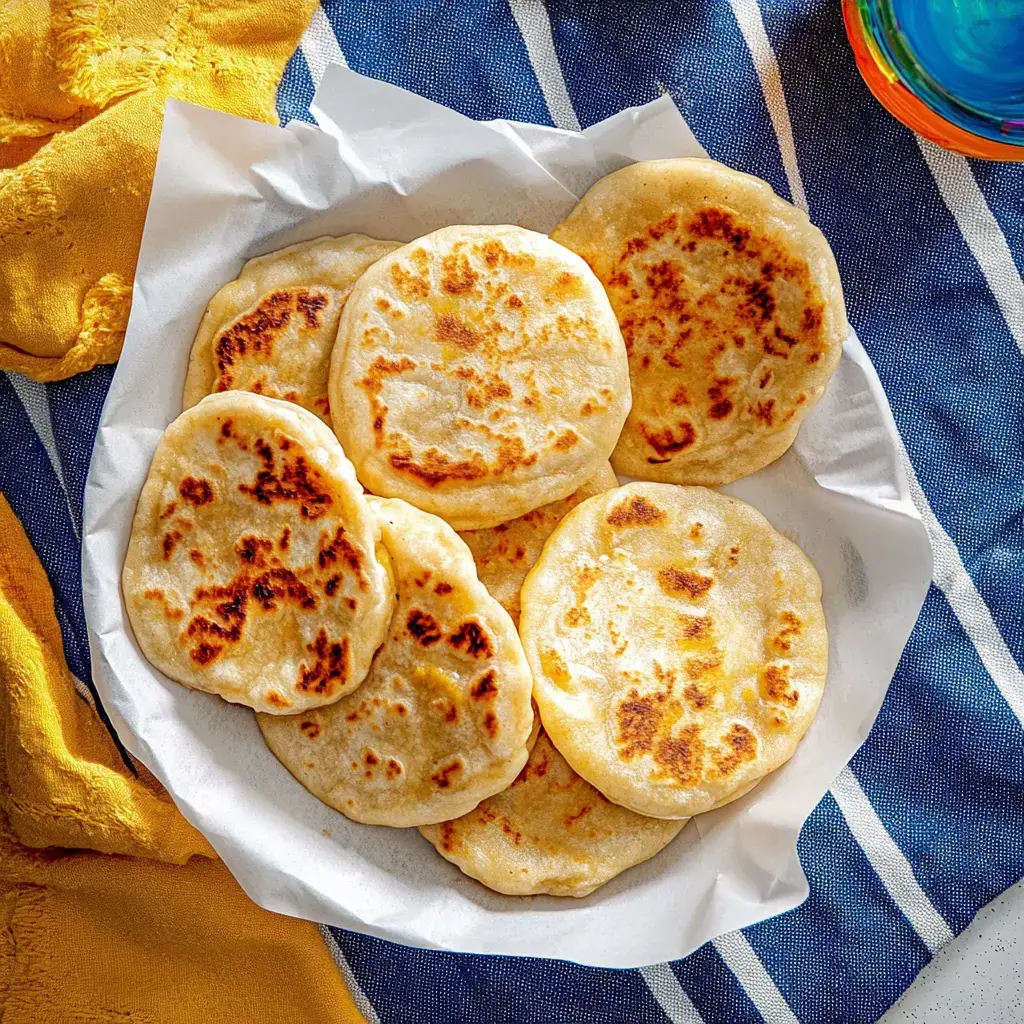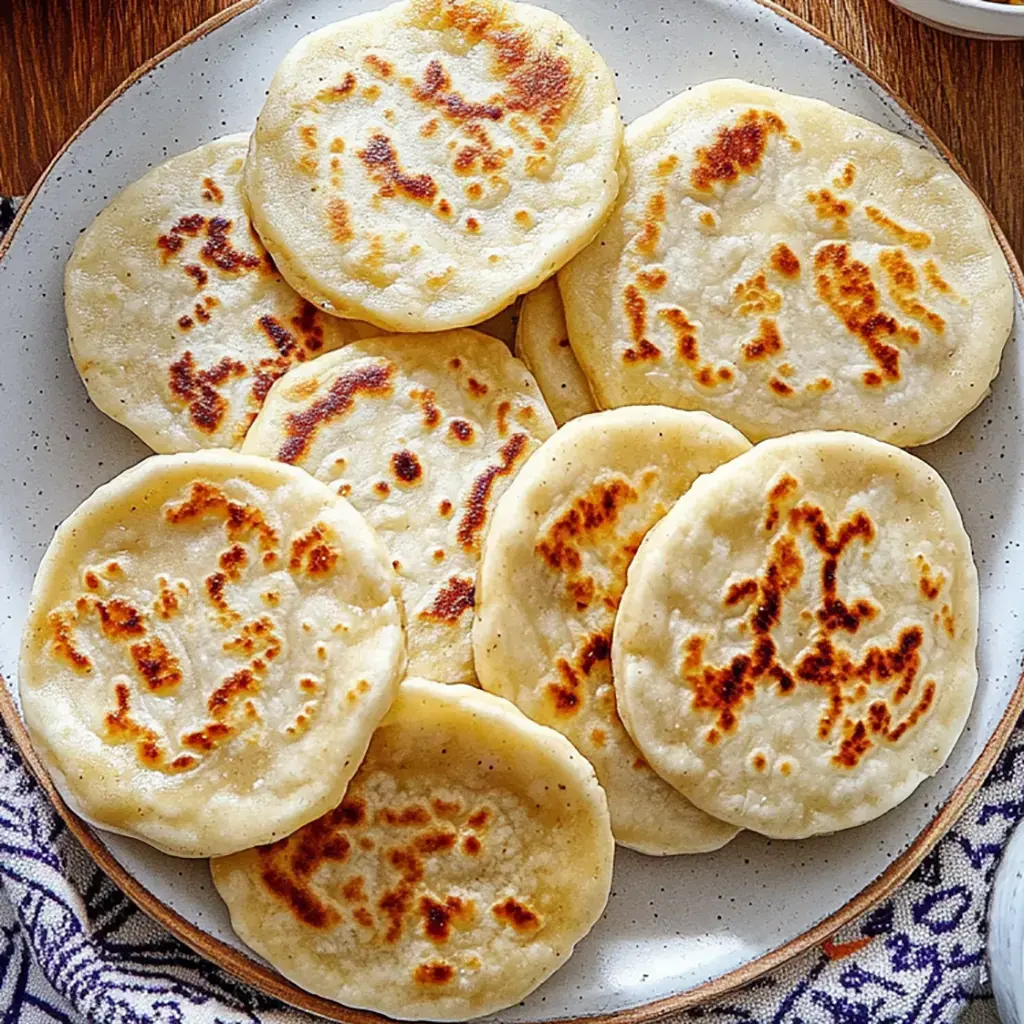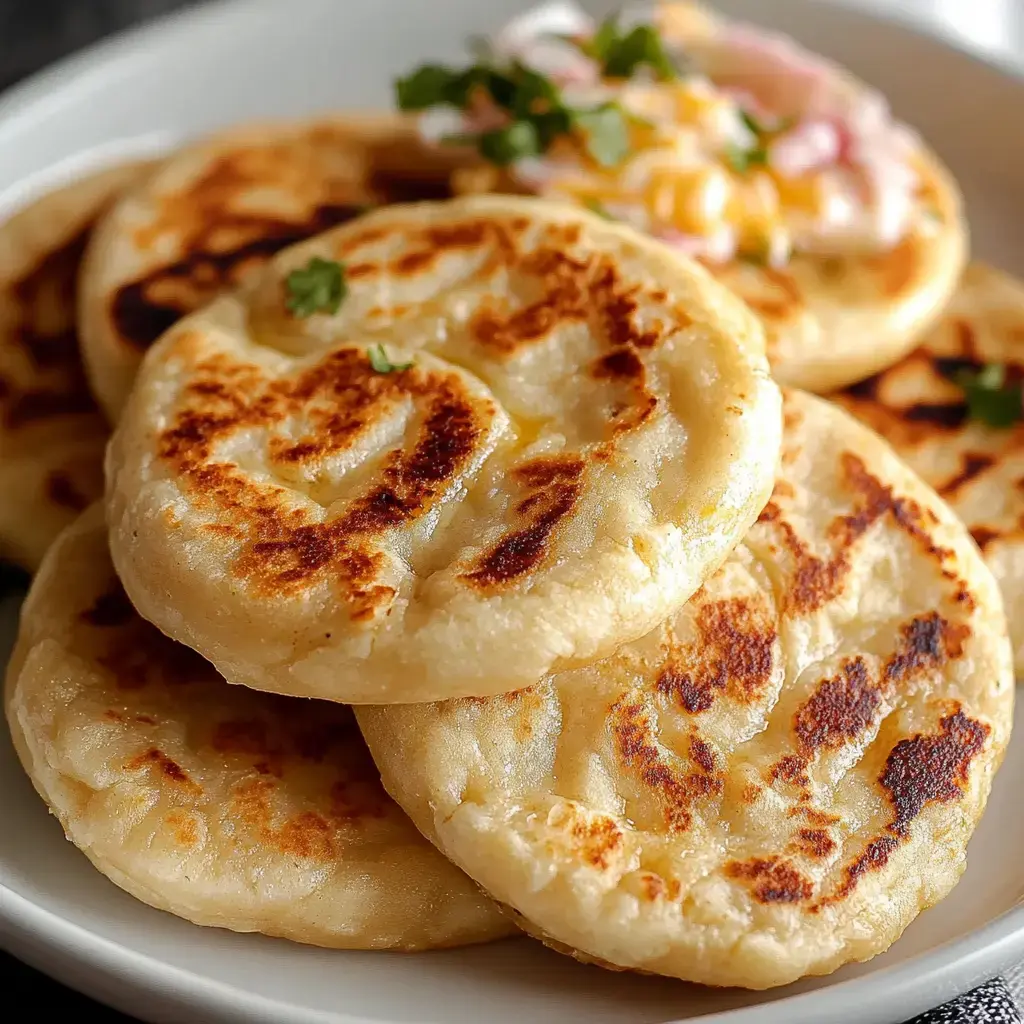 Pin it
Pin it
Working with masa dough brings back memories of market mornings in El Salvador. The magic happens when soft corn dough wraps around melty cheese and beans then cooks up golden on a hot griddle. Nothing beats fresh pupusas hot off the pan.
My Journey with Pupusas
I fell in love with pupusas in my friend Maria's tiny kitchen watching her grandmother work magic with masa dough. Those early attempts had cheese bursting out everywhere but her patient guidance helped me get it right. Now I can share this piece of El Salvador from my own kitchen to yours.
Ingredients for Pupusa Perfection
- Masa Harina: 2 cups (Maseca preferred) for the dough's base.
- Hot Water: 1 1/4 cups to achieve the right consistency.
- Sea Salt: 1/2 teaspoon for flavoring the dough.
- Mozzarella Cheese: 1 cup shredded, for gooey filling.
- Refried Beans: 1/2 cup warm, optional for traditional taste.
- Cooked Pork: 1/2 cup (optional) for a savory addition.
- Vegetable Oil: 2 tablespoons for cooking.
- Warm Water: Small bowl for shaping the dough.
- Extra Oil: For greasing hands while working.
- Essential Tools: Large mixing bowl, cast iron skillet or griddle, clean towel, plastic wrap or zip bag.
Step-by-Step Instructions
- Prepare the Dough
- Mix 2 cups masa harina and 1/2 teaspoon sea salt in a large bowl. Gradually add 1 1/4 cups hot water while kneading with your hands. Aim for a soft, playdough-like consistency. If too dry, add water 1 tablespoon at a time. Cover with a damp towel and let rest for 10 minutes.
- Shape the Pupusas
- Roll dough into golf ball-sized portions. Flatten each ball in your hand to form a small bowl. Add about 1 tablespoon of filling (cheese, beans, or pork) into the center. Pinch the edges together to enclose the filling, then gently flatten into a disc about 1/2 inch thick.
- Cook to Perfection
- Heat a cast iron skillet or griddle over medium heat. Lightly oil the surface and cook each pupusa for 3 minutes per side, or until golden brown spots appear. Avoid flipping too early to ensure the crust forms properly.
 Pin it
Pin it
Learning from Mistakes
My first tries weren't pretty. Cracked dough means you need more water cracks between your fingers. Cheese explosions happen when you stuff too much inside or don't seal the edges well. Keep your pan heat steady not too hot or they'll burn before the middle melts not too cool or they'll dry out.
The Perfect Pupusa Party
Sunday pupusa parties are my favorite. I set out bowls of tangy curtido cabbage slaw homemade red salsa and sliced avocados. The curtido gets better after a few days in the fridge so I make it ahead. That crunchy slaw with the soft cheesy pupusas makes everyone smile.
Keep Some for Later
Fresh pupusas taste best but extras make great quick meals. They stay good in the fridge for two days just warm them in a dry skillet to get that crispy outside back. I like making big batches to freeze too. Freeze them flat on a tray then bag them up. Cook them straight from frozen just add a few extra minutes each side.
 Pin it
Pin it
Frequently Asked Questions
- → Why do I need to keep my hands wet while making pupusas?
Wet hands prevent the masa dough from sticking to your fingers. This makes it easier to shape the pupusas and creates a smoother finish.
- → How do I know when to flip the pupusas?
Wait until a golden crust forms on the bottom side before flipping. This usually takes about 3 minutes and helps prevent the filling from leaking.
- → Can I make the dough ahead of time?
It's best to make and cook pupusas right away. The masa dough can dry out or become too soft if left too long, making it harder to work with.
- → What's traditionally served with pupusas?
Pupusas are traditionally served with curtido (a fermented cabbage slaw) and salsa roja. These accompaniments add crunch and extra flavor to the dish.
- → What type of cheese works best for pupusas?
Traditional pupusas use quesillo or Oaxaca cheese, but you can substitute with mozzarella or other melting cheeses. The cheese should be shreddable and melt easily.
